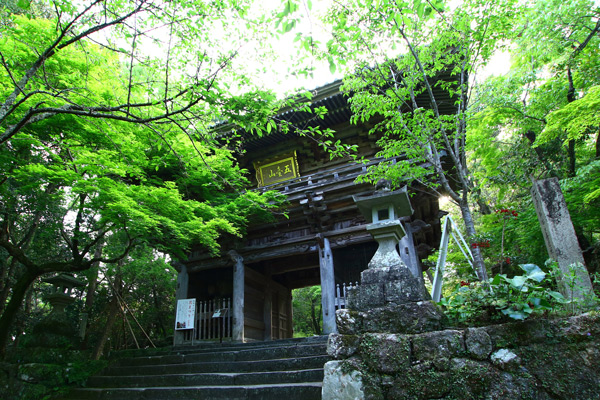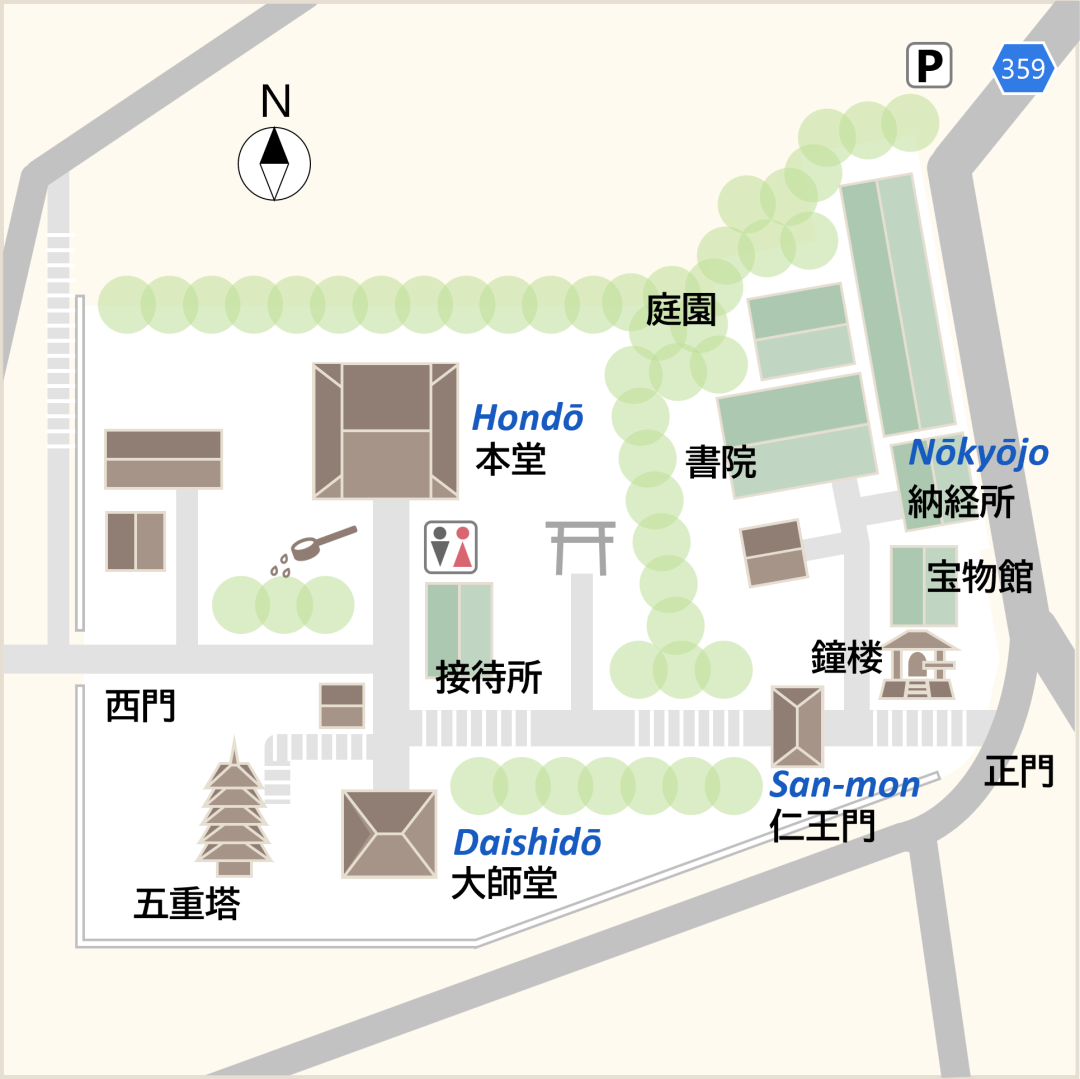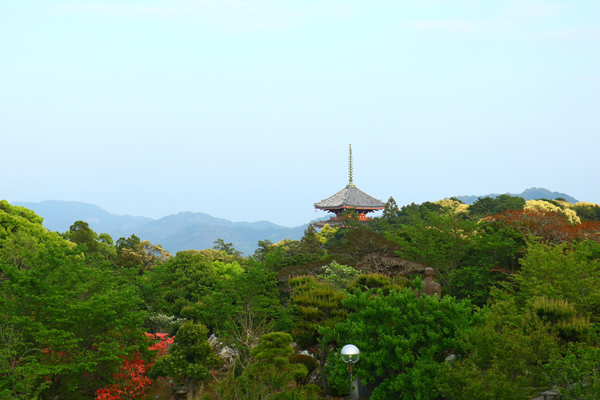The Shikoku Pilgrimage Temple Guide
Temple 31, Chikurinji

Precinct map

History of the temple
This temple is the setting for the famous “Yosakoibushi,” a Japanese folk song with the lyric, "I saw a monk buy a hairpin on Harimaya Bridge in Tosa, Kochi..." The temple was also known as Nankai Daiichi Dojo (the First Temple of Nankai), an academic temple where famous, scholarly priests gathered. One of them was Muso Kokushi (1275-1351), a famous Rinzai Zen priest. He built Gyukoan, a small temple at the foot of the mountain, where he practiced asceticism and taught younger priests for more than two years. Across from the gate of Chikurinji is the Prefectural Makino Botanical Garden and the memorial hall of Dr. Makino Tomitaro (1862-1957), a world-renowned botanist who was born in Kochi. The temple has long been considered the center of Tosa's religious beliefs and culture, as well as one of the best temples in Tosa (Kochi).
According to legend, around 724 Emperor Shomu (reigned 724-749) had a dream that he was climbing Mount Godaisan in China and praying before Monju Bosatsu, the Bodhisattva of Wisdon who is known in Sanscrit as Manjushri. Gyoki was ordered by the Emperor to find a mountain similar to Mount Gotai. He chose this site, carved a statue of Monju Bosatsu from a Japanese bead tree (Chinaberry), and enshrined it in the Hondo that he built on the mountain. During the Daido period (806-810), Kobo Daishi visited this temple. After practicing yogachara, Kobo Daishi restored the dilapidated hall and pagoda.
Since 1601, when Lord Yamauchi Kazutoyo became the first lord of Tosa (Kochi), the temple has flourished as a place of prayer and devotion for the lords of Tosa. The Hondo, also called the Monjudo, was built in the early Edo period (1603-1868) and is a National Important Cultural Property. The Hōmotsuten (Treasure House) on the left side of the temple gate houses 17 statues of Buddha which are National Important Cultural Properties. They date from the Fujiwara period (894-1185) to the Kamakura period (1185-1333). Chikurinji is truly one of the prefecture's greatest treasures.
The view of Kochi City spreads out below. There is an impressive view of gourd-shaped Urato Bay.
Highlights
Mt. Godaisan
Mt. Godaisan, also known as Mt.Wutai, is a 3,000-meter-high sacred mountain in Shanxi Province, China. The mountain is associated with Monju Bosatsu (Manjusri), and was a major center of Buddhist worship. Mt. Godaisan, the site of Chikurinji, is 145 meters high. The entire mountain is designated as a Kochi Prefectural City Park.
Five-storied pagoda
The 31.2-meter-tall pagoda dates from the early Kamakura period (1185-1333). It was rebuilt in 1980. It is made of Japanese cypress, and is the only five-storied pagoda in the prefecture.
Garden
The garden is said to have been created by Muso Kokushi, and is designated a National Place of Scenic Beauty.

Annual Events
| January 1-3 | Ofukuwake |
| January 16th and January 16th of lunar calendar | Niōson Prayer Ceremony |
| January 25th | Hatsu Monjueshiki |
| February 3rd | Setsubune |
| February 8 | Hari Kuyosai (Needle Memorial Service) |
| February 15 | Nehann’e(Parinirvana Day) |
| Around March 20 | Spring Higann’e |
| April 8 | Hana Matsuri (Buddha's Birthday) |
| June 24 | Summer Monjueshiki |
| Early July to end of August | Obon Kuyo (Memorial Service) |
| Late July to August (4 times) | Ikkyusan Shugyo |
| Around September 22 | Autumn Higann’e |
| Around the time of the mid-autumn full Moon | Godaisan Kangetsukai(Mid-Autumn Moon Festival)( |
| Saturday and Sunday in late November | Chikurinji Akimatsuri (Autumn Festival) |
| December 8 | Jodoe (Bodhi Day) |
| December 31 | Joya no Kane (New Year’s Eve bell-ringing) |
Details
Names: Godaisan, Konjikiin, Chikurinji
Denomination: Shingon sect, Chizan school
Principal image: Monju Bosatsu
Founder: Gyoki
Founded: 724
Access
Address: 3577, Godaisan, Kochi City, Kochi 781-8125
Phone: 088-882-3085
Parking: 100 cars, 10 microbuses, 5 buses (free)
Lodging: None
Official website:http://www.chikurinji.com/
Facebook:五台山 竹林寺|chikurin-ji Temple
Instagram:chikurinji.temple
